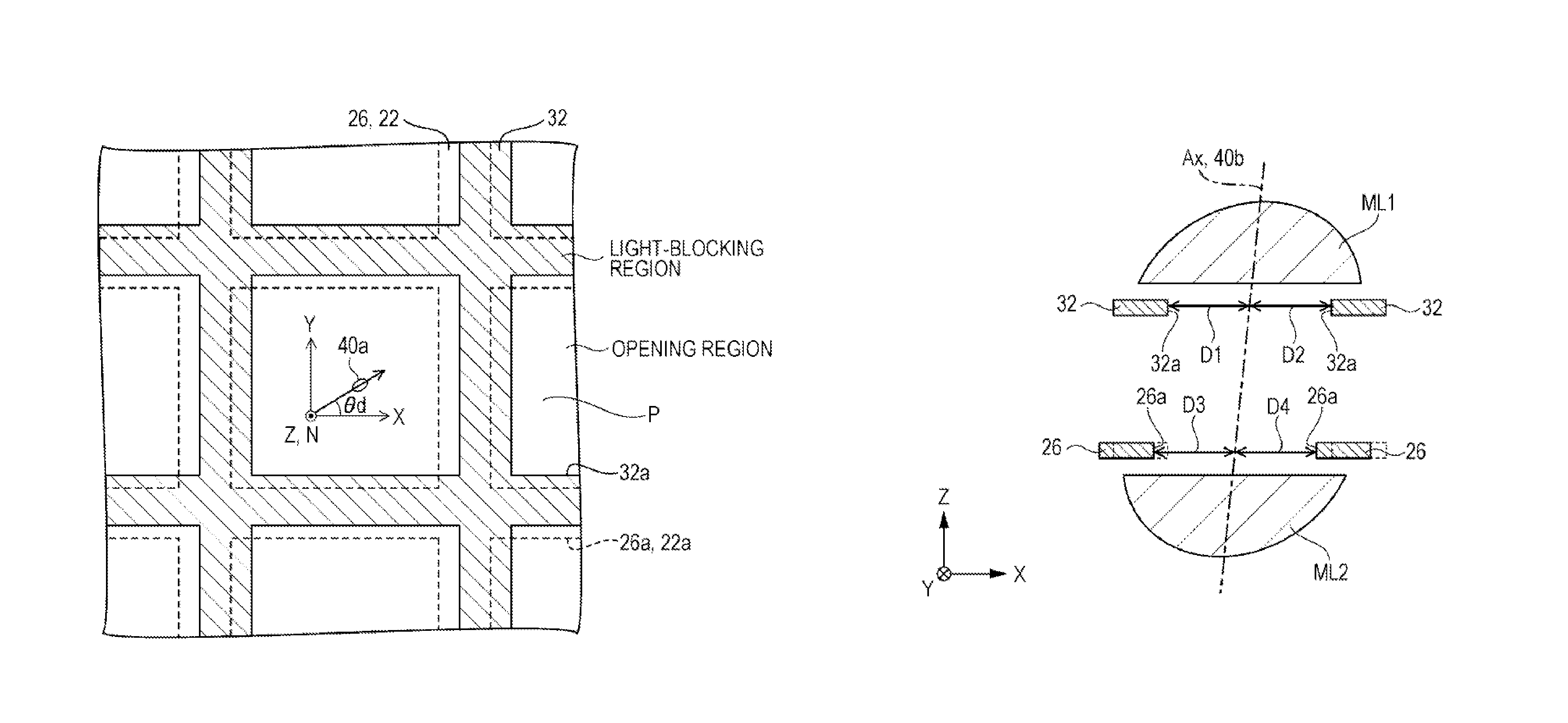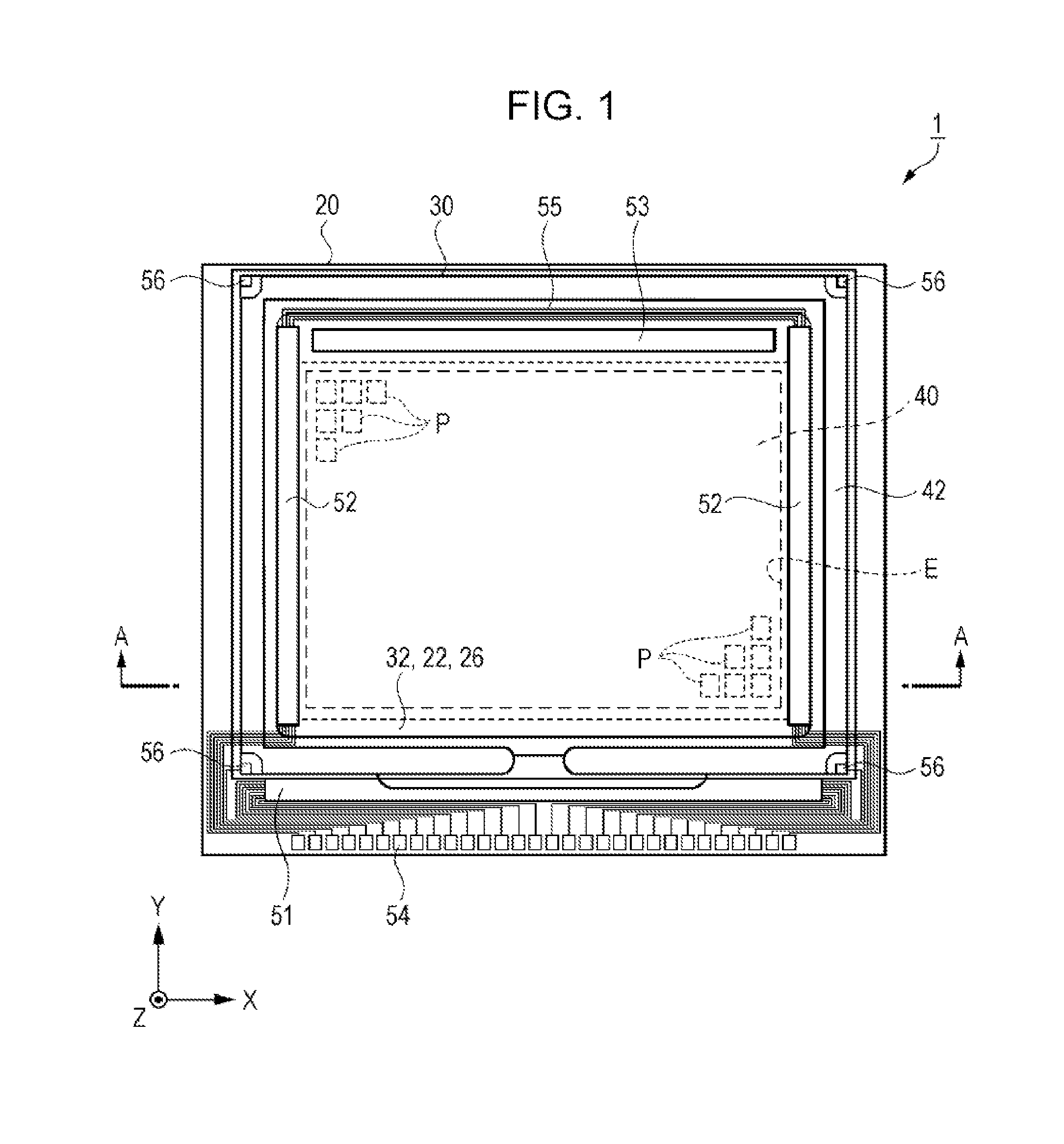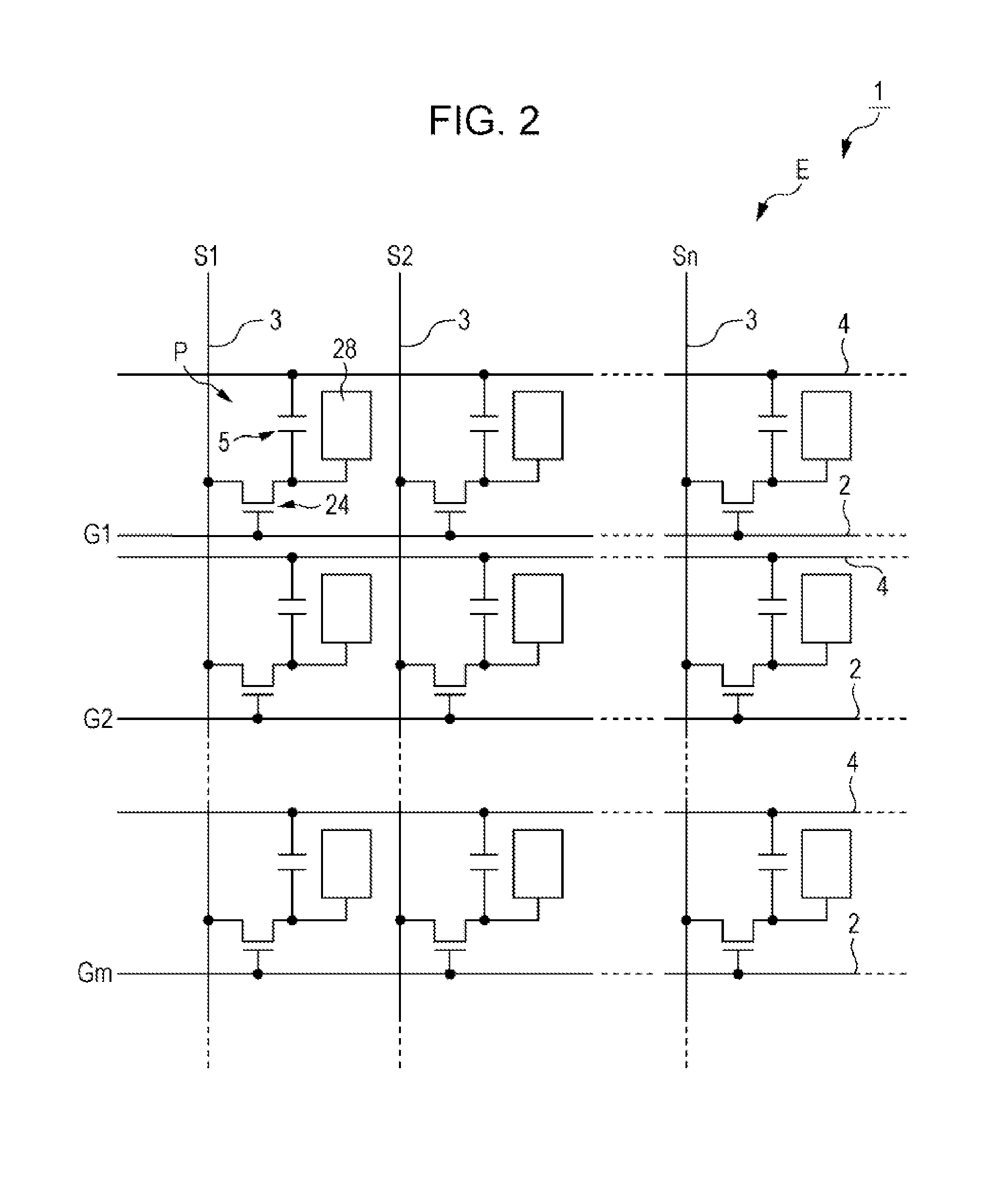Liquid crystal device and electronic apparatus including a plurality of microlenses separated by a liquid crystal layer
a liquid crystal device and electronic apparatus technology, applied in the field of liquid crystal devices and electronic apparatuses, can solve the problems of uneven illumination, difficulty in sufficiently obtaining an effect of improving contrast, and low light use efficiency, and achieve the effect of reducing uneven illumination, high contrast of images projected on screens, and reducing uneven illumination
- Summary
- Abstract
- Description
- Claims
- Application Information
AI Technical Summary
Benefits of technology
Problems solved by technology
Method used
Image
Examples
first embodiment
Liquid Crystal Device
[0029]Here, an active matrix-type liquid crystal device which includes a thin film transistor (TFT) as a switching element of a pixel will be described as an example. The liquid crystal device is, for example, a device which can be preferably used as an optical modulation element (liquid crystal light bulb) of a projection-type display device (projector), which will be described later.
[0030]First, a liquid crystal device according to a first embodiment will be described with reference to FIGS. 1, 2, 3, 4A and 4B, and 5A and 5B. FIG. 1 is a schematic plan view which illustrates a configuration of the liquid crystal device according to the first embodiment. FIG. 2 is an equivalent circuit diagram which illustrates an electrical configuration of the liquid crystal device according to the first embodiment. FIG. 3 is a schematic cross-sectional view which illustrates a configuration of the liquid crystal device according to the first embodiment. More specifically, FI...
second embodiment
Electronic Apparatus
[0109]Subsequently, an electronic apparatus according to a second embodiment will be described with reference to FIG. 8. FIG. 8 is a schematic diagram which illustrates a configuration of a projector as the electronic apparatus according to the second embodiment.
[0110]As illustrated in FIG. 8, a projector (projection type display device) 100 as the electronic apparatus according to the second embodiment includes a polarized light illumination device 110, two dichroic mirrors 104 and 105 as light separation elements, three reflecting mirrors 106, 107, and 108, five relay lenses 111, 112, 113, 114, and 115, three liquid crystal light bulbs 121, 122, and 123, a cross dichroic prism 116 as a photosynthesis element, and a projection lens 117.
[0111]The polarized light illumination device 110 includes, for example, a lamp unit 101 as a light source which is formed of a white light source such as an ultrahigh pressure mercury lamp or a halogen lamp, an integrator lens 10...
modification example
[0119]In the configuration of liquid crystal device 1 according to the above described embodiment, the microlens ML1 of the microlens array substrate 10 and the microlens ML2 of the microlens array substrate 60 have the same shape, and the apex of the lens layer 63 is located on the side which is opposite to the apex of the lens layer 13 with respect to the normal line N of the substrate 11 which passes through the center of the pixel P, however, the invention is not limited to this configuration. The microlenses ML1 and ML2 may have different shapes as long as the lenses have the same function as that in the above described embodiment.
[0120]For example, the lens layer 13 has a curved surface shape which is swollen toward the face 11b side of the substrate 11 to which light is input, and the lens layer 63 has a curved surface shape which is swollen toward the face 61b side of the substrate 61 from which light is output, however, the respective lens layers 13 and 63 may have curved s...
PUM
| Property | Measurement | Unit |
|---|---|---|
| pretilt angle | aaaaa | aaaaa |
| pretilt angle θp | aaaaa | aaaaa |
| pretilt angle θp | aaaaa | aaaaa |
Abstract
Description
Claims
Application Information
 Login to View More
Login to View More - Generate Ideas
- Intellectual Property
- Life Sciences
- Materials
- Tech Scout
- Unparalleled Data Quality
- Higher Quality Content
- 60% Fewer Hallucinations
Browse by: Latest US Patents, China's latest patents, Technical Efficacy Thesaurus, Application Domain, Technology Topic, Popular Technical Reports.
© 2025 PatSnap. All rights reserved.Legal|Privacy policy|Modern Slavery Act Transparency Statement|Sitemap|About US| Contact US: help@patsnap.com



